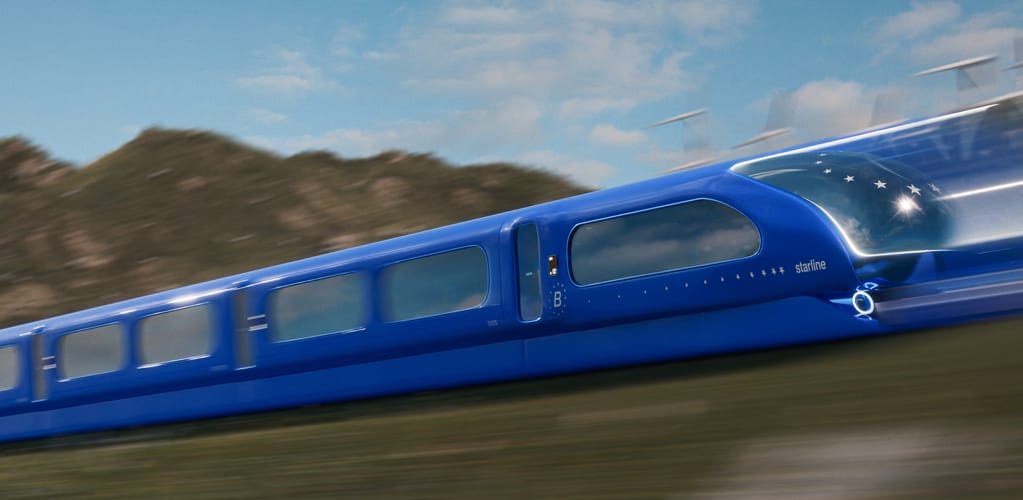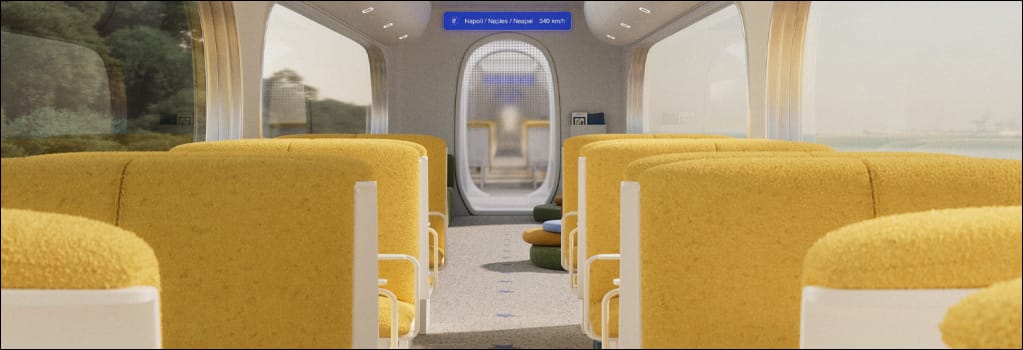
All aboard the future: Starline’s bold vision for a high-speed, united Europe
Think tank proposal imagines a 22,000 km high-speed rail network transforming Europe into a fast, green, and interconnected continent by 2040.
What you need to know
🔹 Starline proposes a pan-European high-speed rail network connecting 39 major cities.
🔹 Designed for seamless travel, cultural hubs, digital ticketing, and AI-driven security.
🔹 It aims to cut emissions, reduce flight dependency, and unify fragmented rail systems.
🔹 Starline features shared governance, open access, and economic resilience via passenger and cargo transport.
A Copenhagen-based think tank, 21st Europe, has unveiled Starline — a radical new blueprint for European transport that could revolutionise the way people and goods move across the continent.
Modelled on metro systems, Starline proposes a continent-wide high-speed rail network that connects 39 major cities, spanning from the UK to Turkey and Ukraine, with sleek, deep-blue trains gliding at 300–400 km/h.
“Starline is more than a high-speed rail network,” the think tank explains. “It’s a rethink of how design, technology, and culture can create infrastructure that is seamless, sustainable, and exciting.”

— Starline’s interior is designed to offer different spaces for different needs without the rigid hierarchy of traditional first- and second-class divisions.
The vision includes reimagined stations as cultural hubs located outside city centres to avoid congestion, and interiors designed for experience rather than hierarchy — with quiet zones, family-friendly sections, and onboard cafés. Ticketing would be open and digital, while AI-driven security replaces queues with seamless, real-time monitoring.
Starline aims to address Europe’s fractured rail infrastructure, which remains “fragmented, slow, and expensive,” despite rising demand for climate-friendly alternatives. Currently, transport accounts for 29% of EU emissions, with short-haul flights still dominant. “A bold shift to high-speed rail might be Europe’s best chance to meet its 2050 net-zero goals,” argues 21st Europe.
CONTINUE READING...
Enjoy unlimited access now.
To get full access to this article,
simply become a member of EUROPEANS TODAY now.
By doing so, you will be supporting
our independent journalism.
MEMBERSHIP OPTIONS:
£3/month ∙ £5/month ∙ £7/month
You can cancel anytime.
BECOME A MEMBER
Already a member? Sign in here!
BENEFITS OF MEMBERSHIP:
✅ Read exclusive member-only articles
✅ Read our daily review of the UK front pages
✅ Receive every new article by email
✅ Access all our articles
✅ Get Special Discounts with our partners
✅ Join the conversation: Comment our articles
✅ Access our archives
✅ More importantly: Support independent journalism and keep the magazine going
Read more

— Stay ahead of the curve with your daily briefing on the must-read headlines from across Europe. From the UK to France, Germany, Italy, Spain, and beyond — this is your essential guide to the front pages shaping the conversation today.

— Donald Trump’s trade war rattled markets and voter confidence — bond sell-offs and rising prices dent approval ratings, especially among independents, risking Republican losses in 2026 midterms as Democrats gain favour.

— Dive into the headlines that are captivating Europe’s front pages today. Explore the key stories shaping the conversation across the continent.

— Stay ahead of the curve with your daily briefing on the must-read headlines from across Europe. From the UK to France, Germany, Italy, Spain, and beyond — this is your essential guide to the front pages shaping the conversation today.
|
|

